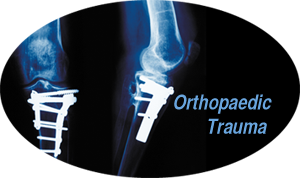ORTHOPAEDIC TRAUMA TREATMENT
Orthopaedic Trauma Treatment In Hyderabad

Orthopaedic trauma conditions include fractures and dislocations as well as severe soft tissue injuries caused by traumatic events. Common orthopaedic traumatic injuries include femoral and tibial shaft fractures, acetabular and pelvic fractures, hand and upper extremity injuries, foot and ankle injuries, among many others.
Nonsurgical Treatment Options of Trauma Injuries :
Some fractures and dislocations,
Surgical Treatment Options of Trauma Injuries :
An internal fixation method is when a physician performs minor surgery to place pins, wires, screws, and plates on the bone to stabilize it. Severe injuries may require more complex surgical procedures including bone grafting, limb lengthening, and complex reconstruction.
Recovery :
The length of recovery for fractures depends on the type and severity of the injury. It can take 3 weeks up to several months for a bone to completely heal, and in the worst cases the bone may never heal completely.
